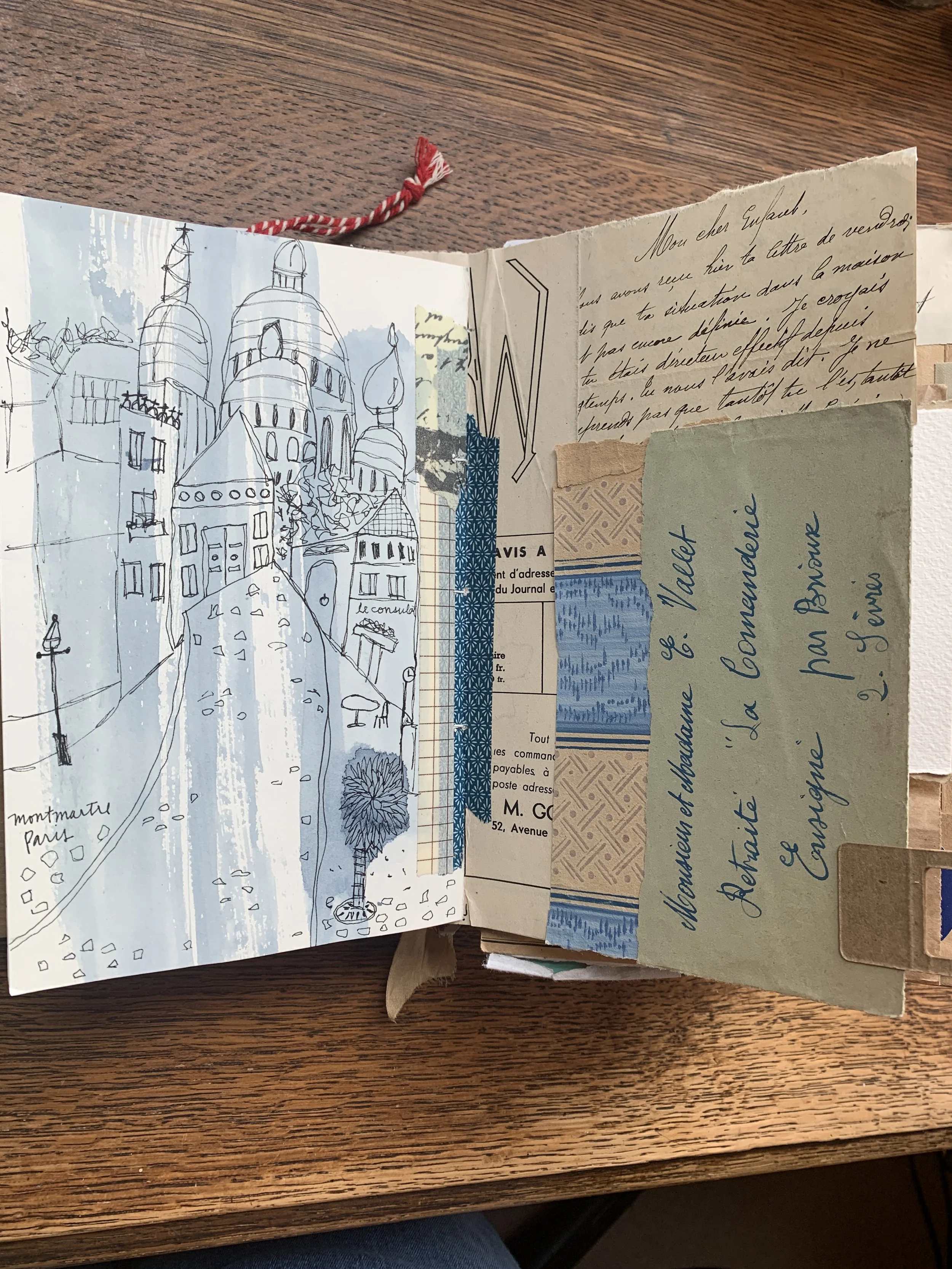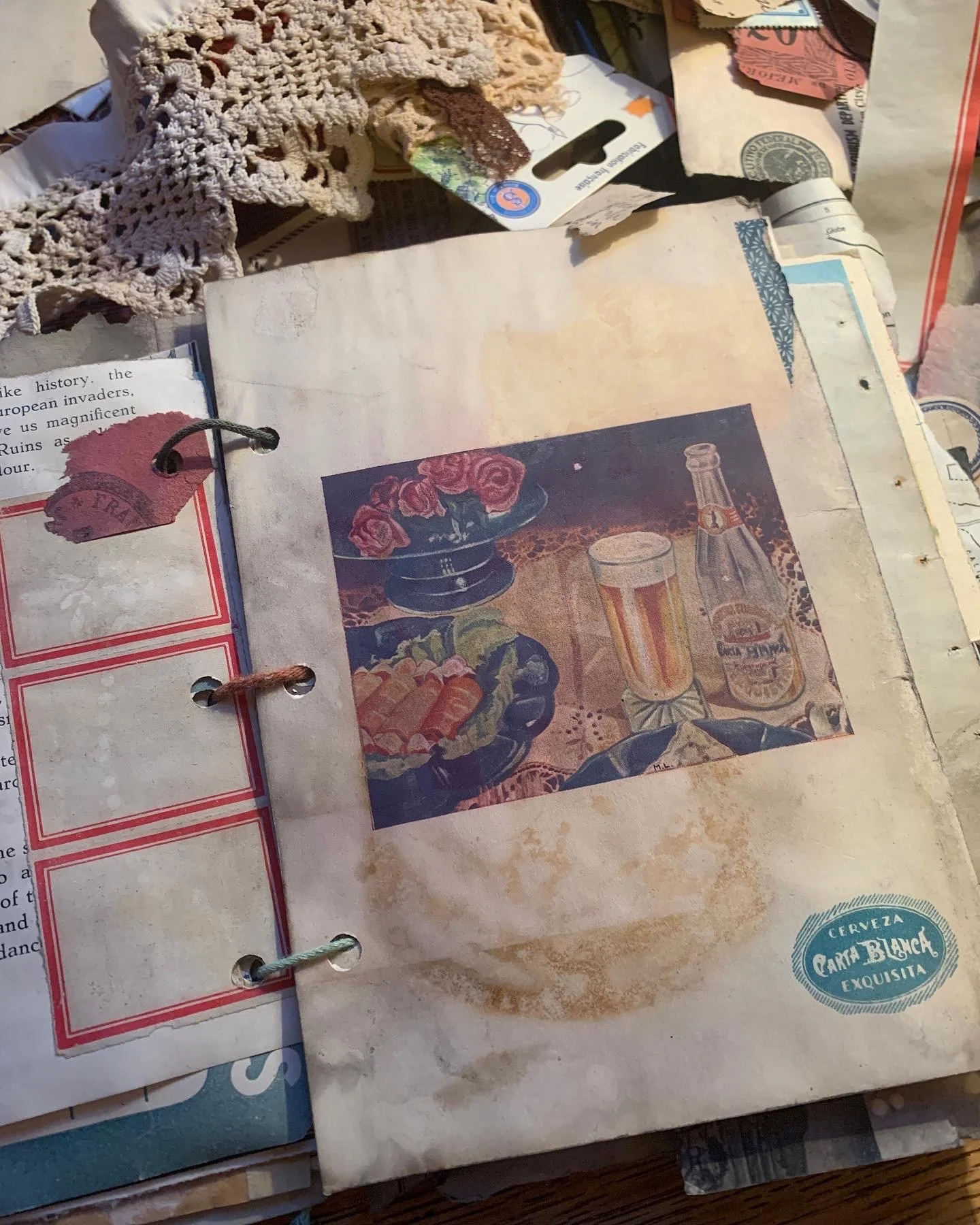Perfectly Imperfect
The Beauty of the Imperfect
Embracing Wabi-Sabi in Art Journaling
In a world that often celebrates perfection, symmetry, and polish, there’s a quiet philosophy that whispers something far more liberating: wabi-sabi.
Rooted in Japanese aesthetics, wabi-sabi is the art of finding beauty in imperfection, impermanence, and the natural flow of things. It honors the weathered, the worn, the cracked edges, and the quiet grace of things as they are. A chipped teacup, a faded photograph, a torn page—each tells a story not in spite of its flaws, but because of them.
In my creative practice—and especially in art journaling—I return to this concept again and again. Wabi-sabi is not just a visual aesthetic. It’s a way of being. A permission slip. A deep exhale. It reminds us to let go of “right” and “wrong,” to soften into the process, and to trust what unfolds.
There Are No Mistakes in Art Journaling
This is a truth I hold close, and one I offer to every student, whether they’ve filled a hundred journals or are opening their first. There are no mistakes in art journaling.
If the paint drips, let it run.
If the page tears, honor the raw edge.
If your handwriting slants or smudges—so be it. That, too, is part of your story.
Mistakes only exist when we hold ourselves to rigid expectations. But wabi-sabi invites us into a different relationship with creativity—one where the "flaws" are part of the beauty, not detours from it.
Let It Happen
Art journaling is one of the few places in life where we’re truly free to let it all be—messy, raw, real. No audience. No approval needed. Just your hands, your heart, and whatever materials call to you in the moment.
Letting it happen doesn’t mean we don’t care. It means we’re willing to dance with uncertainty. We’re open to being surprised. We leave space for wonder, for accidents that lead to magic, for pages that whisper something unexpected.
A Space for Creative Play
When we embrace wabi-sabi, art journaling becomes playground and sanctuary. There’s no pressure to impress or perform. You’re free to layer and rip, scribble and collage, paint over something or leave it raw and unfinished.
Creative play is essential nourishment. It’s where our intuition speaks loudest, where healing takes root, and where our truest voice begins to emerge—not perfect, but whole.
Let Go of “Right” and “Wrong”
If you’ve ever paused mid-page wondering, Am I doing this right?, I invite you to gently let that question go.
There is no right.
There is no wrong.
There’s only you, showing up.
Wabi-sabi teaches us that nothing is permanent. Nothing is ever truly finished. And in that beautiful in-between, we get to create freely, without needing to fix or control the outcome.
So the next time you sit down with your art journal, I invite you to let it be wabi-sabi.
Let it be imperfect. Let it be real. Let it be you.
Because that is more than enough. That is beautiful.
Eager for more on the topic of wabi-sabi?
There is a lovely book by Leonard Koren called Wabi-Sabi for Artists, Designers, Poets and Philosophers. Support independent bookstores* by buying it here. Or check it out at your local library. I think you’ll love it.
*This is an affiliate link where I receive a small commission if you make a purchase. It doesn’t cost you anything, but it does support of my work and the magic I get to share. Please know that I would never recommend anything that I don’t personally LOVE myself. Thanks so much for being here.





